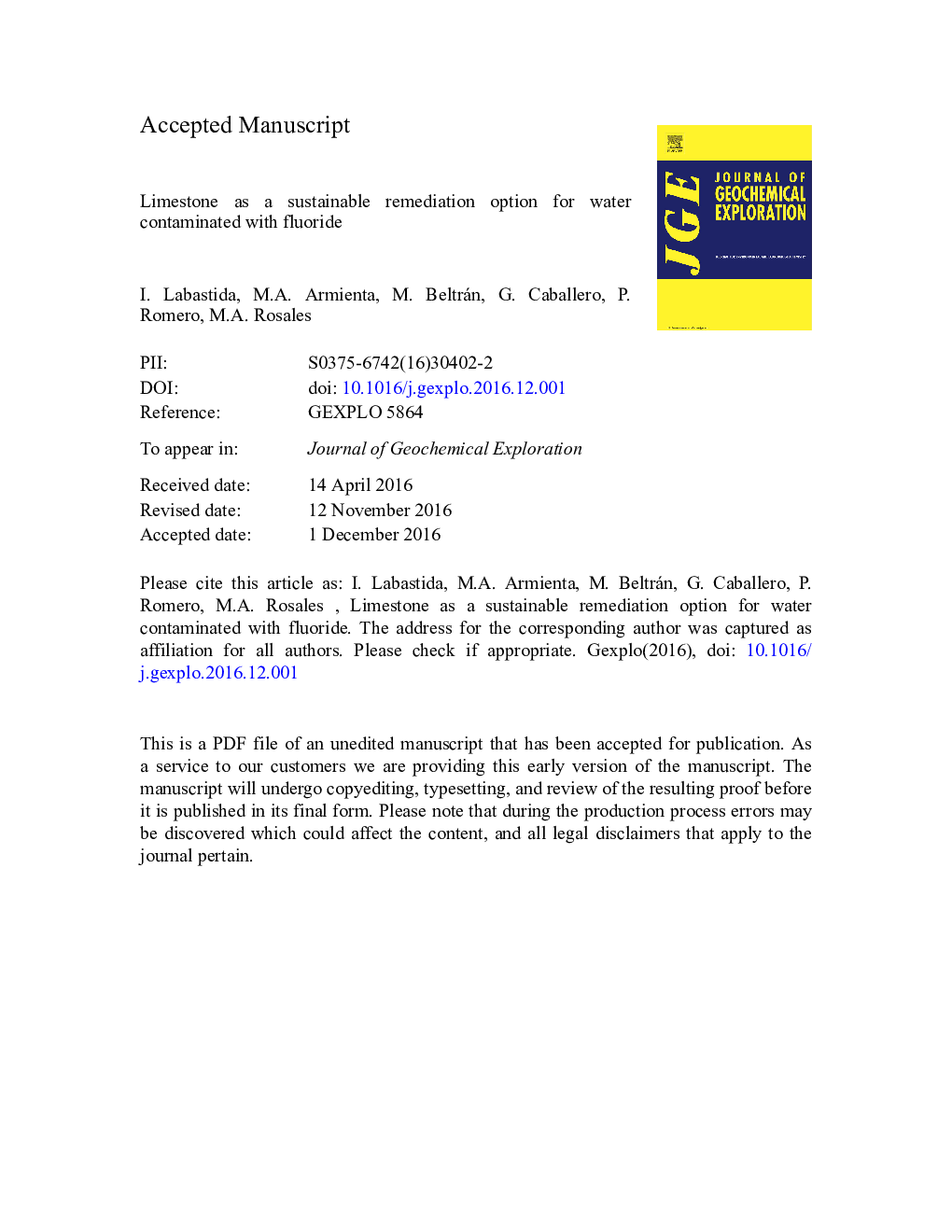| Article ID | Journal | Published Year | Pages | File Type |
|---|---|---|---|---|
| 8866211 | Journal of Geochemical Exploration | 2017 | 29 Pages |
Abstract
This manuscript reports on batch and column water-treatment experiments to remove fluoride using limestones from various geological rock formations (KIT1, KIT2, and KSS). The experiments evaluated removal efficiency and its relation with CaCO3 content and particle size (63-125 μm, 300-600 μm, and 840-1410 μm). The results showed an efficient removal ability between 60% and 65%, which indicates that these materials may be used to treat fluoride-contaminated water or as part of a treatment system. The physico-chemical conditions for fluorite formation and precipitation were also evaluated, due to the natural presence of the Fâ/CaCO3 geochemical system. Possible removal mechanisms were evaluated through adsorption isotherms, saturation index (SI) calculations, and precipitation experiments within Fâ/Ca2 + systems. The concentration profiles along the columns with time indicated the occurrence of various sorption/desorption processes that may involve the formation of external sphere complexes. Batch experiments carried out to evaluate adsorption and feasibility of fluorite precipitation showed that the Fâ/CaCO3 ratio may be used to explain the removal mechanisms and the precipitation of CaF2 formation that occur in bulk solutions.
Related Topics
Physical Sciences and Engineering
Earth and Planetary Sciences
Economic Geology
Authors
I. Labastida, M.A. Armienta, M. Beltrán, G. Caballero, P. Romero, M.A. Rosales,
